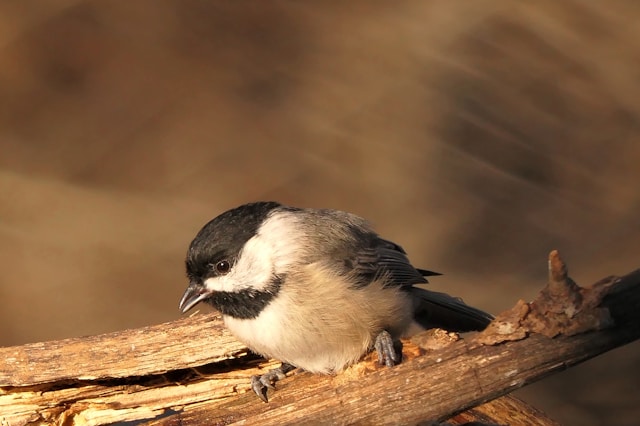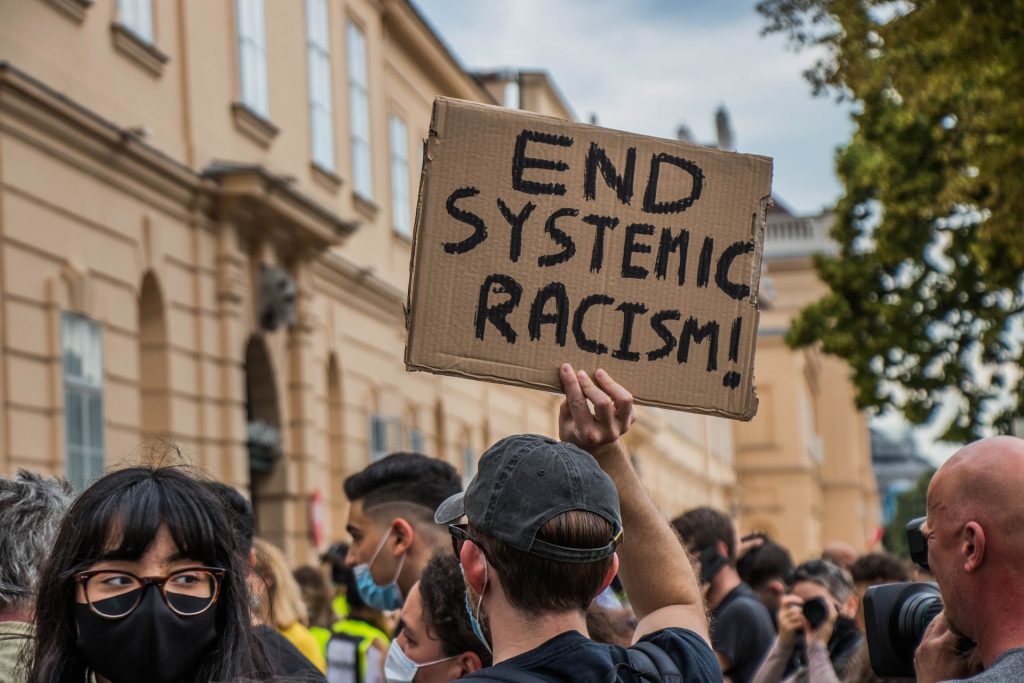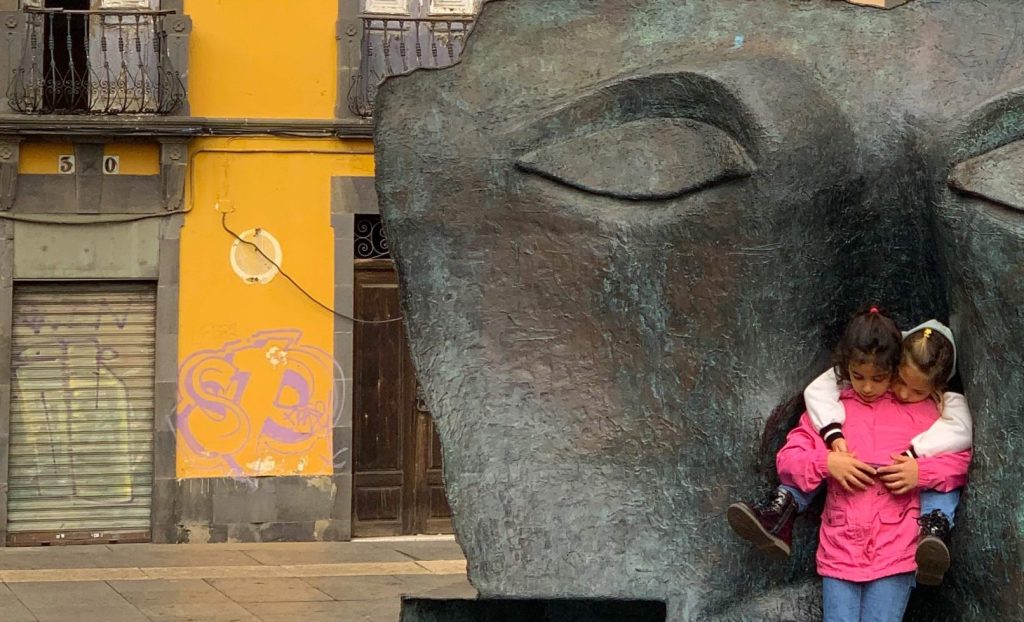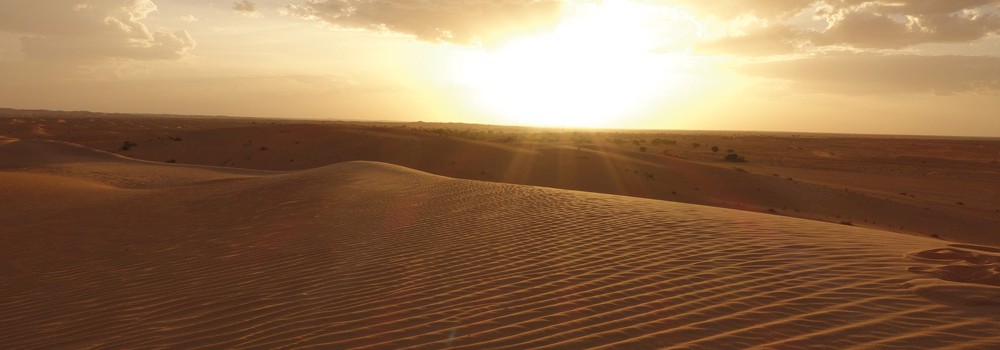Earth Hospice
“Unfortunately, there’s a lot more where that came from,” says Mike as we gather another armload of ash logs from the back of his truck and carry them into my shed. Mike and his family live in a log cabin on ten acres of woodland composed mostly of white pine and ash, and the ash is dying.
“I know,” I say as I stack the firewood on the growing pile. “It’s so sad.” An insect that probably hitched a ride to the U.S. from Russia in a wooden packing crate about thirty years ago is decimating ash trees across more than thirty-five states and five Canadian provinces. The emerald ash borer is a showy creature, with a sparkling green back and a scarlet belly, but its glamourous appearance belies a monstrous appetite, and it has already killed more than fifteen million trees.
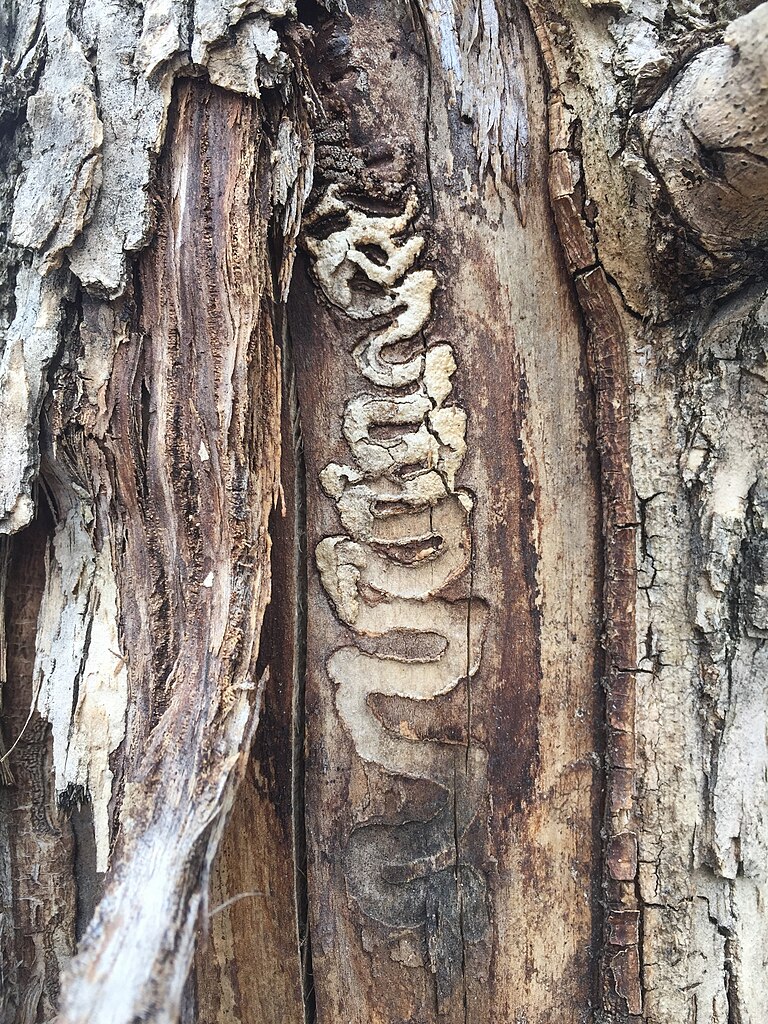
Mike picks up one of the logs and draws his finger over the wheat-colored wood. “Here, you can see the tracks they make.”
Like a ribbon of toothpaste unfurled by a toddler engrossed in a stealthy experiment, the pale white trails loop and wind through the cambium. It is this tissue just under the bark that draws water and nutrients through the tree; by eating their way through it, the beetles slowly interrupt the vascular system, and the tree dies. The emerald ash borer, or EAB, is aided in its march through North America’s forests by climate change, for fewer very cold days give it more opportunity to keep flying on to new and tasty locations.
We both fall into the silence of helplessness.
“So,” says Mike, trying to put a positive spin on the conversation, “just let me know if you need more.”
Climate change, a fairly benevolent term on the surface, is seeded by heat. However, despite one cheery report I heard on the radio a couple of decades ago, this is not the simply kind of heat that could make it possible for vineyards to flourish in Maine. Climate change brings heat that spawns calamitous reactions in multiple directions, each of which spawns new problems. It is a fearsome process and one that will go on expanding, shattering, and rearranging until, finally, the world ceases to pump excessive carbon dioxide into the atmosphere. Climate change itself is the biggest invasive beast in human history.
The bravest among us despair, even as they resolve to buy local foods and electric cars, plant pollinator gardens, and refrain from getting on planes. The more timid console themselves by evoking hope and an abiding belief that God or scientific ingenuity will somehow yank us out of the boiling pot at the last minute. However, the chance that the nations of the world will, without delay, take the steps required to reduce carbon emissions radically enough to prevent the most devastating effects of climate change looks unlikely. Scientists now say we will probably not be able to prevent the temperature from rising more than 1.5 degrees Celsius above pre-industrial levels, the goal set at the 2015 climate summit in Paris.
We must take a deep collective breath and say, Yes, the Earth as I know it is dying.
***
The Earth itself isn’t dying, of course. This planet has endured and remade itself countless times over its four and a half billion-year lifespan and will do so again. It has burned, flooded, tilted and retilted, frozen and thawed, poured out seas, thrust up mountains, and devised such an extraordinary variety of creatures that we can only gasp in astonishment that, for instance, it took only 541 million years for the eye to develop into the organ with which we can gaze upon the wonder of it all. So, yes, the Earth will continue to adapt, even to catastrophic climate change.
But something very dear to us humans really is dying, and that is our relationship with the Earth. We love our places—all the lives they contain and foster and all the physical and emotional nutrients that they infuse into our own lives. And when our places are hurt, we hurt too.
What is dying now is our conviction that, even if some calamity of fire, water, or wind takes our home and our neighborhood, we can stoke up our vaunted human resilience, rebuild, and get back to normal. What is dying is the assumption that drastic weather is only an anomaly and that “nature” will soon right itself. What is dying is the expectation that our grandchildren will awaken on summer mornings to birdsong. What is dying, if we’re honest with ourselves, is the hope that we can fix this.
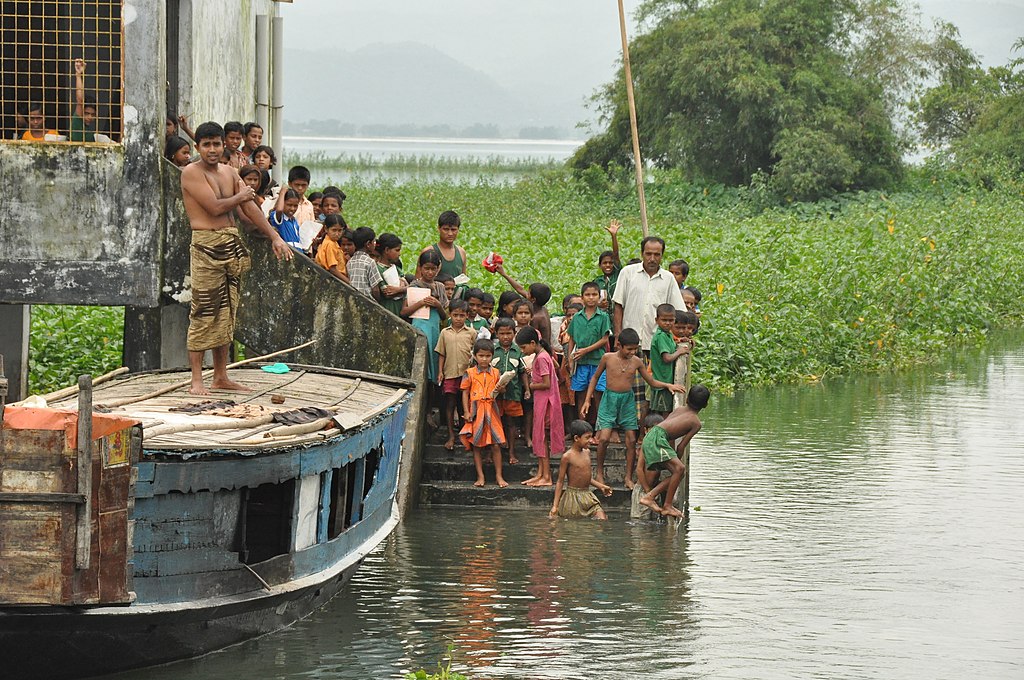
Facing brokenness, the human impulse is to rush in and take action. Things can be done to correct the problem. Things must be done. And as the world confronts climate change, much can be and already is being done, like the construction of floating schools in Bangladesh, built of wooden decks atop plastic drums to accommodate rising waters, and the “green corridor” of lands that The Nature Conservancy is purchasing and piecing together along the Appalachian Mountain chain to ease the northward migration path of birds and animals. A bean-bearing tree, the pongamia, grows wild in Pacific regions yet thrives in almost any soil and requires no pesticides and minimal irrigation. Agriculturists believe it could provide not only a food source, but also a biofuel. Individual choices matter too, such as reducing consumption of meat and refraining from the effortless satisfaction of our whims through a simple click of the mouse.
However, another kind of action is crucial too, and that is the practice of Earth Hospice. We need to stand by the places and creatures that have supported and inspired us as they go through changes we abhor. We must care for the natural world we love, from the tree in the backyard to the birds and squirrels in our city park to remote mountains and oceans, as we would care for a dying family member. We need to lament the losses, even as we develop practices of compassionate attention, mourning, and celebration of all that remains. We have to form a new relationship with what we have taken for granted, including our human communities and our familiar forms of activism, and find a way to live with what is evolving without succumbing to greed, despair, and hate. Earth Hospice will not be an easy undertaking, but it can be a meaningful, even sacred, avocation.
Hospice for humans is a place, time, and practice we may choose when it becomes clear that a person who is ill can no longer recover. Death nears. Unlike active medical care, hospice is largely non-interventional. A person who is dying in hospice may receive drugs to alleviate pain, but extreme measures such as feeding tubes, CPR, and other forms of life support cease. The atmosphere, unlike that in a hospital, is quiet, calm, and devoid of alarming noises and flashing lights. For the dying person it is the final project, which some take on willingly and even welcome, and others fight till the very last breath. For loved ones, hospice begins the process of the permanent goodbye. We acknowledge the loss that looms and take our first steps into an absence that will never again be filled. Hospice is the occasion for bearing witness to the great mystery of death, drenched, yes, in grief, but also filled with awe. It is a time for tears, touch, gratitude, waiting, weeping, and, especially, love.

Like hospice for people, Earth Hospice is a way of saying goodbye to what we are losing in the natural world with the same mindfulness we would wish to bring to the bedside of a dying person. We bear witness to what is passing—from our lawns, our riverbanks, our bird feeders, our winters and summers, our livelihoods and our expectations of the future, as we declare over and over again: I will not turn away. Earth Hospice means attending to what we’re losing, knowing that we can’t save it, but also that we don’t have to abandon it. Just the opposite: we can abide by it and open our hearts to all it means to us.
The call for humans to bear witness to the many lives endangered by climate change first arose in 2014 with Carolyn Baker’s article, “Welcome to the Planetary Hospice,” on the website opendemocracy.net. Baker proposed a response to climate change in which “conscious grieving is an integral component of the maturity required to balance compassionate action with the discerning acceptance of our predicament.” More recently, psychologist and hospice worker Zhiwa Woodbury has written of the need for a new and widespread “planetary hospice movement” to shift attitudes about “the difficult contractions and painful pangs of the Great Dying.” The time has come not just to recognize the urgency of beginning this process of conscious grieving, but also to engage in practices that will help us to live with loss.
The practices of Earth Hospice—I prefer the term “Earth Hospice” to “planetary hospice,” for there are many planets in the cosmos, but only one Earth—have to be simple enough so that anyone can do them. They must require no special tools, expertise, or elaborate planning. They must be adaptable enough to be relevant to people of any race, religion, or ethnicity. They might have a spiritual component or they might not. They are devoted to sharing emotions and interacting with endangered places and beings, rather than to more pragmatic projects like protests, restoration, education, or community gardens, but they would enhance any of those gatherings. Here are a few possibilities:
Vigil
The average stay in a hospice facility is two days. Earth Hospice will require a longer commitment. Unlike the death of a human, definitively marked by that last breath, nature’s endings will often not be so clear and precise. Species of frogs and trees don’t crash to extinction in a few days. Wildfires, droughts, and hurricanes will wreak more immediate, more drastic damage. People who have lost their homes may tell themselves that it’s safe and even brave to start rebuilding as soon as possible. However, even as charred forests persist in regenerating, or one rainy summer pours some hope into a parched lake, the fate of these places, like that of the frogs and trees, is far from secure. With Earth Hospice, we seek out damaged or endangered places and sit attentively with them as we get acquainted with their new and hard reality. During a vigil, even if it lasts only a few moments, time warps out of its ordinary patterns. What is before us takes on a new vividness. The movement of light over the land, the arrival and departure of breezes, and the sounds of birds, water, and leaves become significant events in the life story of this place we’ve settled into. The borderline between ourselves and the other softens, as if both of us have slipped into a kind of shared space, where our individual identities—human/lakebed, human/ash tree—meld into some ineffable existence we share.
At a weeklong vigil I organized in an old-growth clearcut forest on Vancouver Island, British Columbia, one woman spent hours each day on a split stump of cedar so wide she could lie almost full length across its ringed remains. She began to reflect on the life story of this tree and all that had passed before it during its seven or eight hundred years of life. The tree came alive for her, despite, or through, its death. She realized that, when she and her husband had installed cedar paneling in their den a few years earlier, she had never even considered the trees that had given their lives to become those walls. After she returned home, she made a point of thanking the wood that had once been trees like the one she had gotten to know.
Ceremony
A ceremony is an event that models in a limited time, a specific location, and symbolic actions a path the participants intend to follow for a prolonged time and over many places and experiences. A funeral, for example, is a formal goodbye. A wedding brings together the friends and family of the couple as witnesses to their vows to love and care for each other all their lives. Both ceremonies have a clear beginning and ending and often include stories, music, readings, and prayer. These elements, easily adapted for an Earth Hospice ceremony, invite those who are gathered to share their feelings about the place or species they’ve come to honor and to manifest those feelings through some kind of action or gesture, as the exchange of rings or the shoveling of soil onto a coffin concretize the spirit of a wedding or funeral. An Earth Hospice ceremony might be an expression of sorrow or gratitude for a place harmed by extreme weather, an opportunity for people to pay tribute to a plant or animal species that’s under threat, or even a tribute to a favorite activity, such as ice skating on a frozen neighborhood pond, which may never be again be possible. Statements of resolve, hope, or commitment to act might be part of the ceremony as well.
A woman whose small oceanside house was destroyed by Hurricane Irma in 2017, conducted a private ceremony. As she sat on what remained of her dock, she tore a length of saffron-colored fabric into long, thin strips, speaking aloud with each rip an emotion she wished to release: grief, pain, lack of confidence, blame, guilt, anger. Then, on pieces of paper, she wrote positive qualities that she wanted to foster on the small plot of land where she intended to rebuild her house. These emotions included joy, beauty, stability, meditative solitude, abundance, friendship, and spirituality. She wrapped the paper messages in the fabric and tied them to the broken bushes that had survived the gale winds that took her house. The ceremony helped her to accept what had happened in a new way and to fortify her as she moved forward.
Sharing of Stories
When we gather together in a place that’s important to us and take turns speaking about what it has meant to us, the connection between people and place takes on a new and robust form, even though the place itself is damaged or destroyed. Each person’s story of past experiences with the place and current response to what has happened to it builds on every other person’s story. It is as if the trees, rocks, animals and waters come alive again as they are evoked by those who have appreciated them and now mourn their passing. An opportunity to share stories might be the sole activity at a dessicated lake or a rose bush no longer supped on by honeybees, or it can become an integral part of any other activity.
Gift Giving
When we visit someone in hospice, we might bring a gift of flowers, music, or a soft blanket to make the dying person feel comfortable and surround them with beauty. Places, too, can be the recipients of gifts. We can make a mandala on an eroding beach, create an altar on a dead tree, or twirl along with the first snowflakes to fall in an unseasonably warm winter. Making a gift for a place, especially when we use only the materials that the place itself supplies us with, such as sticks, stones, coal, or seaweed, we affirm that a place, like a person, already has all the elements it needs for its intrinsic beauty to re-emerge. In my organization, Radical Joy for Hard Times, people have made gifts for a great variety of places, from a vanishing glacier in Alaska to a Balinese clove forest that has produced little fruit for several years, since unseasonal rains knock the buds off the trees, to a vacant city lot where a group of young people made a sculpture out of trash.
To make a gift for a place is to give something greater than any tangible object or act. We give to the whole complex existence of the place as we understand, imagine, and have experienced it. We make these offerings not to receive gratitude from the recipient, of course, but to express our gratitude for it, our sorrow for what has happened to it, and our connection with the other people to whom it means something. By gifting a broken place with beauty, compassion, and generosity, we often experience an inexplicable yet unmistakable burst of joy.
Joining Other Forms of Activism
As we confront the ravages of climate change, all kinds of responses will be necessary: education, protest, the development of new forms of architecture, food production, energy, art, litigation, and of course the moderation of personal habits. Earth Hospice is a practice that can interweave with any of these methods. For example, activists who gather to protest outside a coal-fired power plant can begin by sitting together in a circle, as each person speaks of their feelings about their own energy use and their hope for the action they are about to undertake together. Members of a local or national environmental group whose efforts to save a canyon from mining or a forest from logging have proven futile can conduct a funeral for the place on whose behalf they’ve worked so hard. They might wear black, construct a coffin for the place, and play somber music as they “lay to rest” what has gone before and will be no more. School students can take a field trip to a place that has contributed to global warming, like a power plant, or been a victim of it, like the river which that behemoth has overtaken, and then write an essay about what happened and what signs of resilience and recovery they discovered.
Amazement
This, finally, must be the practice that accompanies any other Earth Hospice activity: the cultivation of amazement for all we have left. Wildflowers popping out of the glossy black char of a burned forest, a chorus of wood frogs in a seasonal pond, the constancy of the moon and sun—these are revelations that affirm that, even as we grieve what is happening to the Earth we know, the Earth itself goes on—resisting, finding new ways, pushing through, and endlessly creating. As we learn to face so much loss in our world, greeting what thrives can seed us with life. We can embrace “hello” even as we are bidding “goodbye.”
Earth Hospice is a long-term responsibility, one into which we will have to initiate our children and grandchildren, that they may pass it on to their own descendants, for unlike the grief we feel as we sit at the bedside of a dying person, our sorrow for nature’s decline will not be soothed with the passing of time. The endings will keep on happening. The fading of nature as we know it will spread in ways we can barely imagine now. Attending the Earth through this process will be a difficult mission—and yet it can be a deeply meaningful one. We will come to know more intimately the ways of the places and lives we care about. We will recall, over and over, the intricacy of the connection between the landscape around us and the landscape within our own psyches. We will gain a new appreciation for qualities of stamina, stubbornness, resilience, and surrender, as forests, oceans, and animals respond to their challenges, and we will find inspiration for how we humans, collectively and individually, might also respond. We will activate reserves of compassion and come to know our neighbors in new ways through a shared love of place. We will open up to the beauty and complexity of this small orb in the midst of the universe, this Earth that gave rise to all of us: amoebas, leopards, nuclear power plants, Rachel Carson and Rembrandt, honeybees and coronavirus, you and me.
***
Every time I burned the ash wood in my stove, I thought of the trees whose remains fed the fire. I realized at last that an Earth Hospice ceremony was in order.
In a circle in my back yard I arrange a dozen ash logs, standing upright like proud little reminders of what they once were. Some bear the scars of the insects that gnawed through them. On top of each log I place a handful of birdseed. Then, turning slowly in a circle, I address each piece of wood, acknowledging the beautiful ash tree it was and expressing my sorrow that it and so many millions more trees have died and will continue to die. I tell the logs I’m grateful for the heat they give my house and, widening my focus, assure both the logs and the land around me that I will scatter the ashes from the fire around my trees and gardens to fertilize them.
As I speak, something happens. It is as if the life of these logs—all the seasons they’d grown in a central New York woodland; all the birds, animals, and insects they’d housed; all the weathers they’d absorbed—still radiate from them, as heat shimmers round my body when I step out of a hot bath. The logs become more than logs. They become vivid and specific descendants of the trees they were and ancestors to the smoke they will become. There is nothing supernatural about this new clarity. It is simply a form of the deepening intimacy we feel as we get to know a new friend or lover.
I step outside the circle and bow. Shortly after I come back inside, a chickadee lands on one of the logs and begins pecking at the seeds.
